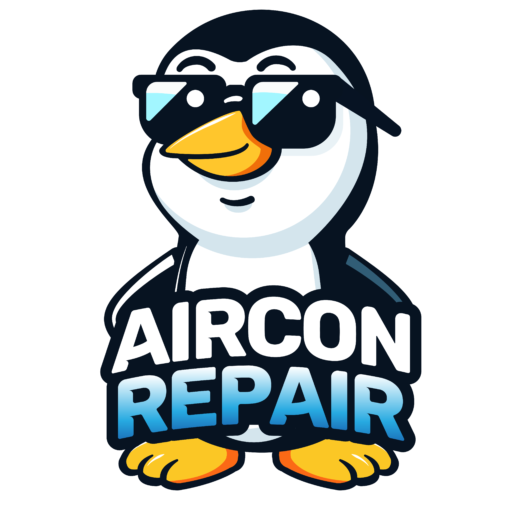Indoor air quality plays a critical role in overall health, especially for individuals prone to allergies. What many people fail to realize is how essential HVAC service is in preventing allergy flare-ups. More than just a heating and cooling system, a well-maintained HVAC unit acts as a first line of defense against airborne allergens like dust mites, pollen, pet dander, and mold spores. By improving ventilation, filtering out irritants, and controlling humidity levels, your HVAC system contributes to a cleaner and safer indoor environment. This article explores the importance of regular HVAC service for allergy prevention, backed by actionable strategies and best practices that support a healthier indoor atmosphere.
The Connection Between HVAC Systems and Allergies
How HVAC Systems Affect Indoor Air Quality
HVAC systems regulate more than just temperature, they directly influence the air you breathe every day. These systems filter out airborne particles, control indoor humidity, and circulate fresh air throughout your home or workspace. Without regular HVAC service, these systems can become breeding grounds for allergens and pollutants.
The Role of HVAC Filters in Allergen Control
The air filters within HVAC systems trap harmful particles like dust, pollen, pet dander, and even bacteria. However, over time, these filters can become clogged, reducing their efficiency and allowing allergens to circulate freely. That’s why routine replacement and inspection of air filters are essential components of effective HVAC service.
Benefits of Routine HVAC Service for Allergy Sufferers
1. Improved Filtration with High-Quality Filters
To reduce allergen exposure, it’s important to use high-efficiency filters in your HVAC system. Filters with a high Minimum Efficiency Reporting Value (MERV) or HEPA (High-Efficiency Particulate Air) ratings are capable of capturing fine particles that traditional filters may miss.
- Humidity Control Reduces Mold and Dust Mites
Humidity levels play a major role in allergy prevention. Too much moisture in the air encourages the growth of mold and the proliferation of dust mites, both of which can trigger allergic reactions. On the other hand, excessively dry air can irritate respiratory pathways. Regular HVAC service ensures that built-in humidifiers or dehumidifiers are functioning properly and that indoor humidity levels remain within the optimal 30–50% range.
3. Cleaner Air Ducts and Reduced Contaminant Circulation
Over time, dust, mold, and other allergens can accumulate in your ductwork. If these contaminants aren’t removed, they can spread throughout your space each time your HVAC system runs. Including duct cleaning as part of your comprehensive HVAC service plan helps prevent the redistribution of allergens, supporting cleaner, healthier indoor air.
HVAC System Features That Support Allergy Prevention
Advanced Filtration Options
Modern HVAC systems can be enhanced with additional filtration technology:
- UV Lights: These kill mold spores and bacteria before they circulate through your home.
- Electrostatic Filters: Charged filters attract particles like a magnet, trapping allergens that conventional filters might miss.
- Media Filters: These thick filters provide several inches of filtration power, capturing even finer particles than standard filters.
Incorporating advanced filtration features during your HVAC service can significantly reduce airborne irritants.
Variable-Speed Fans for Enhanced Air Circulation
Unlike single-speed fans, variable-speed fans adjust their output based on your space’s needs. This creates steady airflow that helps reduce the settling of dust and allergens, ensuring air is continually filtered and recirculated efficiently.
Smart Thermostats with Air Quality Sensors
Smart thermostats can do more than just regulate temperature, they can also monitor air quality metrics like humidity, volatile organic compounds (VOCs), and particulate matter. These features allow you to receive real-time alerts and adjust your HVAC settings accordingly, making your home more responsive to allergen control needs.
Specialized HVAC Configurations for Allergy Control
Ductless Mini-Split Systems
Ductless systems offer targeted temperature and air quality control without relying on ductwork that may harbor allergens. They’re particularly effective in managing conditions in specific rooms or zones and are ideal for households with allergy-prone individuals.
Zoned HVAC Systems
Zoned HVAC systems allow for individual control of temperature and air quality in different areas of your home. This is especially beneficial when only certain zones require heightened allergy prevention, allowing you to customize airflow and filtration where it matters most.
Complementary Allergy Prevention Strategies
While HVAC service is foundational to allergen control, it should be paired with other indoor air quality best practices for optimal results.
Maintain Balanced Humidity
Use portable humidifiers or dehumidifiers in conjunction with your HVAC system to maintain balanced humidity. High humidity fosters mold growth, while low humidity allows dust and allergens to remain airborne longer. Keeping humidity between 30–50% supports respiratory comfort and discourages allergen proliferation.
Clean Regularly with Allergen-Friendly Tools
Dust and vacuum your space at least once a week using tools equipped with HEPA filters. Pay special attention to carpets, curtains, and furniture, which can trap allergens and release them into the air over time.
Reduce Indoor Pollutants
Avoid products that release VOCs, such as air fresheners, candles, and harsh cleaning chemicals. Instead, opt for fragrance-free or natural alternatives. Reducing the number of indoor pollutants eases the burden on your HVAC system and supports cleaner air.
Incorporate Allergy-Friendly Plants
Certain indoor plants can naturally purify the air by absorbing toxins. Options like spider plants, peace lilies, and snake plants not only enhance indoor aesthetics but also assist in maintaining healthier air quality. Choose low-pollen varieties to avoid aggravating allergies.
Conclusion
Allergy prevention starts with the air you breathe and a well-maintained HVAC system is one of the most powerful tools you have to safeguard your indoor environment. From advanced filtration and humidity control to duct cleaning and smart airflow management, routine HVAC service goes far beyond comfort, it supports your health and well-being every day. By investing in regular maintenance and incorporating allergy-friendly system upgrades, you’re not just improving air quality, you’re creating a cleaner, safer space for everyone in your home. Don’t wait for allergy symptoms to flare up. Make HVAC service a non-negotiable part of your wellness routine and breathe easier year-round.
